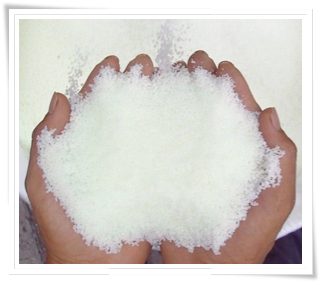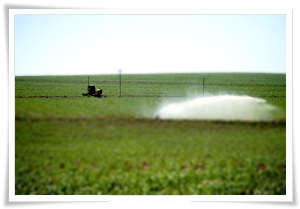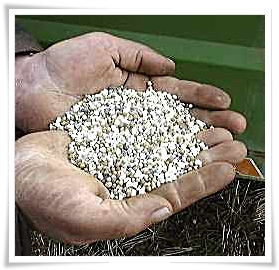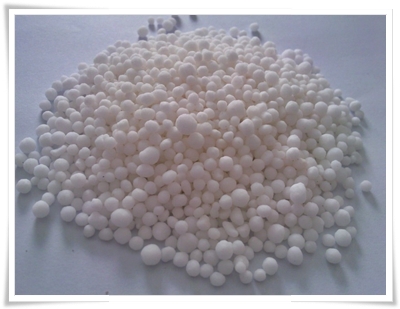Fertiliser
Prilled Urea and Granular Urea
Formula: Urea is widely used in the agricultural industry as an animal feed additive and fertilizer. With 46 % nitrogen, it is an efficient source of nitrogen in fertilizers. [NH₂CONH₂]
Prilled Urea

Prilled urea, or "prills" are formed by dropping liquid urea from a prilling tower into droplets that dry into roughly spherical shapes 1mm to 4 mm in diameter.
Granular Urea
Granular urea is chemically the same as prilled urea. Granular urea, however, is slightly larger and harder. Today, the use of prilled urea is more prevalent because it is more resistant to breaking down when being blended with the other components of fertilizer.
Description:
Urea is the most popular and economical of all nitrogenous fertilizers being used worldwide. Urea has a nitrogen content of 46%, a higher concentration than this is available in other solid sources of nitrogen. Unlike phosphate and potassium fertilizers, which normally require a single application, urea needs to be applied several times during the growing season. Urea is an ideal source of nitrogen for all kinds of crops (wheat, barley, rice, maize etc.) In addition, urea is a major raw material for melamine, and an important raw material for the manufacture of other industrial products.
Urea
| Properties |
Unit |
Quantity / Description |
|
|---|---|---|---|
| Spherical shape | granules |  |
|
| Melting point | °C | around 132 | |
| Molecular weight | amu | 60 |
Granular Urea specifications
| Properties |
Unit |
Quantity |
|
|---|---|---|---|
| Total nitrogen | wt % | 46 min |  |
| Biuret content | wt % | 1% max | |
| Formaldehyde (HCHO) | wt % | 0.45 min | |
| Crushing strength | kg | 2 min | |
| Moisture | wt % | 0.5 max | |
| Particle size | wt % | 2-4 mm....90% min > 4 mm....7% max +2.8 mm....60% min |
Prilled Urea specifications
| Properties |
Unit |
Quantity |
|
|---|---|---|---|
| Total nitrogen | wt % | 46 min |  |
| Biuret content | wt % | ≤ 1 | |
| Moisture | wt % | ≤ 0.5 | |
| Particle size | wt % | 1-2.8 mm....90% min |
Hazards and safety
The product is relatively safe and chemically stable. When it decomposes it produces hydrogen cyanide, ammonia, oxides of nitrogen and carbon. As a dust, it may form an explosive mixture with air.
Applications
Broadcasting or in irrigation water (fertigation); best if split applied at least three times throughout the growing season; suitable for all crops across a wide range of environmental conditions.
